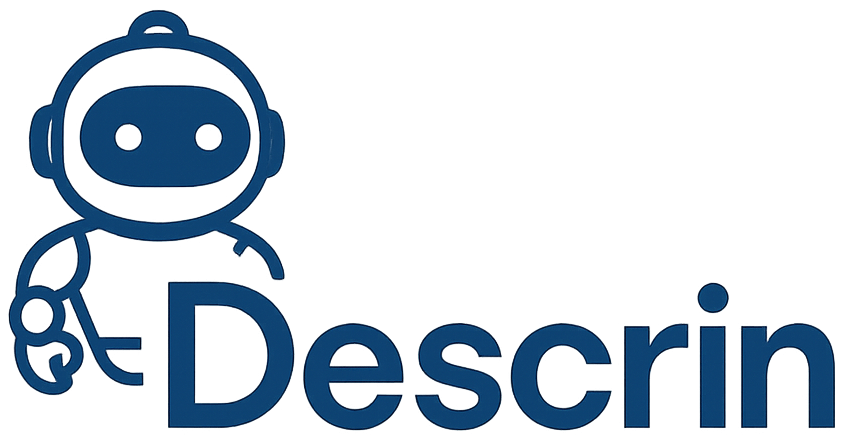Harness Productivity & Automation Tools for Success
In the fast-paced world of software development, success often depends on using the right tools. I used to spend hours on manual tasks, watching time slip away. It was like sand through an hourglass.
Today, teams are changing their workflows with advanced task management platforms. Tools like Harness Open Source have made software lifecycle management easier. They turn complex processes into smooth, efficient environments.
These tools do more than just help with tasks. They help teams work better together, reduce manual work, and boost innovation. They make development more efficient and collaborative.
Table of Contents
Understanding Developer Productivity in Modern Software Development
Software development teams are always looking for ways to improve. They want to make their work flow better anHarness Productivity & Automation Tools for Successd processes smoother. The modern world of software making needs smart ways to measure and boost team performance.
Measuring developer productivity is more than just numbers. It’s about understanding the whole world of making software. It’s about knowing what makes a team work well together.
Key Performance Indicators for Development Teams
Good process automation starts with the right performance signs. Development teams look at a few key things:
- Code commit frequency
- Deployment speed
- Bug resolution time
- Feature completion rate
- Quality of code reviews
Impact of Productivity Metrics
Tools that save time and give clear data help teams a lot. By looking at these numbers, companies can:
- Find where things slow down
- Make development work better
- Get teams to work together better
- Make projects run smoother
The Role of Measurement in Development
Looking at numbers gives a clear view of how teams work. Data-driven decision-making lets managers make plans to get better. This makes teams more productive and software better.
“Measurement is the first step that leads to control and eventually to improvement.” – Harold S. Geneen
By tracking productivity well, teams can make software that’s better, faster, and more creative.
The SPACE Framework: A Comprehensive Approach to Productivity
Modern software development needs a detailed look at productivity. The SPACE framework is a new way to measure how well developers do their jobs. It looks at many aspects of productivity, like using tools and working smarter.
The SPACE framework looks at five key areas:
- Satisfaction and Well-being: Checking how happy and engaged developers are
- Performance: Seeing how well they do their work
- Activity: Counting how much they get done and their tech skills
- Communication: How well they work together as a team
- Efficiency and Flow: How smooth their work process is
Project management tools are key to using the SPACE framework. They help teams track their work closely. This way, teams can see how well they’re doing in many ways, not just one.
The SPACE framework gives teams a rich picture of their work. It shows that being productive isn’t just about numbers. It’s about making a place where developers can do their best work and make great things happen.
The SPACE framework turns productivity into a story of a team’s full potential.
Essential Productivity & Automation Tools for Development Teams
Development teams are always looking for new ways to make their work easier and faster. The right tools can change how teams work together, create, and deliver top-notch code.
Today’s development world needs advanced tools to help with every step of making software. These tools help teams solve problems and make their work better.
Code Repository Management Tools
Good code management is key for teamwork in software development. Top tools offer:
- Version control
- Integrated code review
- Security scanning
- Collaborative workflow
Build Automation Solutions
Build automation tools cut down on manual work and keep software building consistent. They help developers:
- Automate build tasks
- Lower error rates
- Standardize environments
- Speed up releases
Testing and Quality Assurance Tools
Quality is a big deal in software making. Advanced testing tools provide:
| Tool Category | Key Features | Benefits |
|---|---|---|
| Unit Testing | Checks each part | Finds bugs early |
| Integration Testing | Verifies how parts work together | Makes systems reliable |
| Performance Testing | Tests under load | Shows how scalable |
Choosing the right tools can really improve a team’s work and quality.
Build Automation: Streamlining Development Workflows
Build automation has changed software development a lot. It turns complex tasks into easy, fast workflows. These tools help teams do less repetitive work and make fewer mistakes.
Today’s build automation tools are very helpful. They automate tasks like compiling, testing, and deploying software. This lets developers spend more time on new ideas and less on routine tasks.
- Automated build triggers reduce manual intervention
- Consistent deployment across multiple environments
- Rapid feedback on code quality and performance
- Seamless integration with version control systems
Choosing the right build automation tools is key. Continuous integration platforms offer complete solutions. They support many pipelines and smart build triggers. These systems can start builds and run tests automatically, with little setup.
Build automation isn’t just about speed—it’s about creating a more intelligent, responsive development ecosystem.
Developers can use these tools to make strong, flexible build processes. These processes can change as projects evolve. With smart automation, teams can make software faster and better.
Continuous Integration and Deployment Strategies
Modern software development uses advanced automation to change how teams work. Continuous Integration and Deployment (CI/CD) is key to making development smoother. It automates the process of building, testing, and deploying apps.
Pipeline Automation Benefits
CI/CD pipelines bring big wins for development teams. The main benefits are:
- Faster release cycles
- Reduced manual errors
- Consistent code quality
- Improved team collaboration
Implementation Best Practices
For a successful CI/CD setup, teams need a solid plan and the right tools. They should:
- Implement comprehensive automated testing
- Establish version control protocols
- Create reproducible deployment environments
- Monitor pipeline performance
Common CI/CD Challenges
Teams face hurdles like complex setup, integration issues, and keeping pipelines stable. Overcoming these needs ongoing learning and flexible strategies.
“Effective CI/CD is not just about tools, but about creating a culture of continuous improvement and automation.” – DevOps Expert
By adopting advanced automation, teams can improve their workflow. They can speed up software delivery and keep quality high throughout the development cycle.
Optimizing Developer Experience and Team Efficiency

Modern software development needs new ways to manage tasks and work together. Developers today look for tools that make their work easier and faster. Tools like Gitspaces™️ have changed how teams work by making setup simple.
Good productivity hacks can really help teams do better. Developers can use several strategies to improve their work:
- Implement intelligent code completion tools
- Utilize automated code generation technologies
- Master version control workflow techniques
- Create reusable code snippets
Today’s development environments are all about easy integration. Instant coding and debugging are key for modern software making. Platforms that work with VS Code on browser and desktop give developers more freedom.
Using keyboard shortcuts and making code reviews easier are more ways to boost productivity. By focusing on efficient task management, teams can work faster and deliver projects sooner.
The key to exceptional team performance lies in creating an environment that empowers developers to work smarter, not harder.
Now, teams can set up remote environments fast, avoid conflicts, and start coding right away. These changes are a big step forward in making developers’ work better.
Measuring and Improving Team Performance
Software development teams always look for ways to work better and faster. It’s key to track and understand performance to make development environments top-notch.
Measuring team performance is more than just numbers. Good project management tools help get deep insights into team work and individual roles.
Performance Metrics and KPIs
Great teams use many performance signs to check how they’re doing:
- Code deployment frequency
- Lead time for changes
- Mean time to recovery
- Change failure percentage
Team Collaboration Tools
Today’s tools make team work smooth by tracking progress and helping talk to each other.
| Tool Category | Key Features | Productivity Impact |
|---|---|---|
| Project Management | Task tracking, sprint planning | High visibility, improved coordination |
| Communication Platforms | Real-time messaging, video conferencing | Enhanced team interaction |
| Workflow Automation | Automated reporting, process streamlining | Reduced manual overhead |
Productivity Enhancement Strategies
Teams can get better by using smart strategies:
- Use AI tools for coding help
- Keep checking and tweaking workflows
- Invest in learning and growing skills
- Make performance reviews clear and open
“Measurement is the first step that leads to control and eventually to improvement.” – Harry Harlow
By using data and advanced tools, teams can work more efficiently and effectively. This leads to better, more collaborative work environments.
Automation Solutions for Code Management and Testing

Today, developers must create high-quality software fast. Process automation is key to making code management and testing smoother. New software tools are changing how teams ensure quality and keep code up to date.
Automation has changed how software is made. Important tools now use smart tech to cut down on manual work and boost code quality. Teams can use these advanced tools to:
- Automate code reviews and version control processes
- Implement intelligent testing frameworks
- Reduce repetitive manual testing tasks
- Accelerate software development cycles
Tools like Harness AI QA Assistant show the power of modern automation. They can make test creation 80% faster and need less upkeep. This lets developers make bigger, better test suites with less manual work.
Good code management relies on smart automation. With tools that automatically check and test code, teams can spend more time on new ideas. This leads to faster releases, better software, and more efficient work.
“Automation is not about replacing human skills, but amplifying human potential in software development.” – Tech Innovation Quarterly
Choosing the right automation tools is important. You need to think about your team, current setup, and project needs. The best results come from tools that fit well and keep improving.
Implementing Effective Development Environments
Modern software development needs strong and efficient environments. Cloud Development Environments (CDEs) are key tools that change how teams work. They make development smoother and faster.
Today’s developers need easy, ready-to-go workspaces. Cloud Development Environments offer instant, set-up-free platforms. They come with tools and settings already set up.
- Instant environment provisioning
- Pre-configured development stacks
- Consistent workspace across team members
- Reduced onboarding time
These environments also have great features for boosting efficiency:
- Intelligent code completion
- Integrated debugging capabilities
- Seamless version control integration
- Collaborative workspace sharing
“The right development environment transforms productivity from a goal into a reality.” – Tech Innovation Quarterly
| Environment Feature | Productivity Impact |
|---|---|
| Cloud-based Configuration | Reduces setup time by 75% |
| Automated Dependency Management | Eliminates compatibility issues |
| Remote Collaboration Tools | Enhances team communication |
Choosing the right development environment is a big step for team efficiency and software delivery.
Managing Dependencies and Configuration in Automated Builds
Managing dependencies and configuration is key in modern software development. It helps in automating business processes and streamlining project management. Teams face complex tech challenges but must keep builds consistent and reduce manual work.
Automation changes how teams handle build environments. By using smart dependency management, teams can improve their development work.
Dependency Management Strategies
Good dependency management needs strong tools and careful methods:
- Centralized package registries
- Version control integration
- Automated dependency tracking
- Security vulnerability scanning
Configuration Best Practices
Managing configuration is crucial for scalable software systems. Important points include:
- Environment-specific configurations
- Securing sensitive info
- Clear version control
- Automating config deployment
Scalability Considerations
As projects grow, teams need flexible systems. Harness Artifact Registry provides solutions for managing packages. It works well with continuous integration and delivery.
Effective dependency management is not just a technical requirement but a strategic approach to enhancing overall development efficiency.
Conclusion
The world of software development is changing fast. Tools that boost productivity and automation are key to team success. By using these tools, companies can make their development work better and faster.
Tools like continuous integration platforms and integrated development environments are now must-haves. They help teams work better, reduce mistakes, and keep code quality high. This is crucial for handling complex projects.
As technology gets better, using advanced productivity tools will be even more important. Teams need to keep up with new automation strategies. This helps them work better together and innovate more.
The future of software development is bright for teams that use smart automation. With the right tools and a smart plan, companies can make their development work more efficient. This leads to better technology and success.


